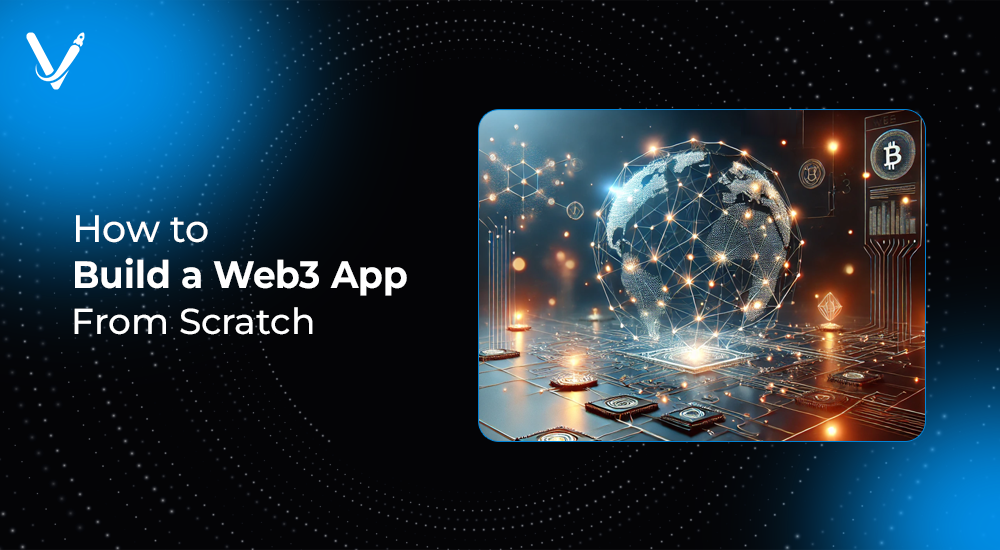How to Build a Web3 App from Scratch


- Jun 11, 2025
The world of Web3 is redefining how users interact with digital platforms, placing ownership, privacy, and decentralization at the core. As traditional web applications face limitations in trust and transparency, developers are turning to blockchain to create next-gen apps. If you're curious about building a Web3 app but don’t know where to start, you're in the right place.
This guide unpacks the entire journey—conceptualizing, designing, and deploying a Web3 application. By the end, you'll have a practical understanding of the technologies involved, step-by-step development processes, real-world applications, and actionable insights to launch your decentralized app (dApp).
A Web3 app, or dApp (decentralized application), is a software program that runs on a blockchain network rather than a centralized server. Unlike traditional applications, Web3 apps allow users to interact with smart contracts directly and retain ownership of their data and digital assets.
Core Characteristics of Web3 Apps:
Examples include Uniswap (decentralized exchange), OpenSea (NFT marketplace), and Axie Infinity (blockchain-based game).
Developing a Web3 app isn’t just a trend—it’s a response to the evolving demands of digital users. Here's why this shift matters:
According to Electric Capital, the number of Web3 developers reached over 23,000 in 2024, highlighting the accelerating demand.
Before jumping into code, it's crucial to understand the tech stack and architecture.
Just like any other web app, the frontend manages the user interface. Popular frameworks include:
In Web3, the “backend” is often replaced or supported by:
These are self-executing pieces of code deployed to a blockchain. Written in:
Users interact with your dApp via wallets like:
To connect to the blockchain, use:
Start by identifying a problem your dApp will solve. Ask:
Example: A decentralized learning platform that rewards students with tokens for completing courses.
Not all chains are built equally. Pick based on:
Install Hardhat (development framework), write a simple contract in Solidity, use OpenZeppelin for secure, audited templates, then compile, test, and deploy on a testnet like Goerli.
Use a tool like Hardhat, Truffle, or Foundry.
Deployment example with Hardhat:
npx hardhat run scripts/deploy.js --network goerli
Integrate smart contract using Web3 libraries:
If your app involves large files (NFTs, media):
Instead of email/password, use wallet-based login:
Index smart contract events using:
Smart contracts are immutable. Ensure thorough testing:
Apps like Aave and Compound let users lend and borrow assets permissionlessly.
Platforms like OpenSea enable artists to tokenize and sell digital art with on-chain proof of ownership.
Axie Infinity introduced a model where players earn real tokens by participating in gameplay.
Projects like Lens Protocol and Farcaster aim to give users ownership of their content and followers.
Decentralized Autonomous Organizations like MakerDAO allow users to vote on governance proposals with tokens.
Web3 development in 2025 is expanding into sectors like:
Projects like Worldcoin and decentralized identity platforms show how real-world identity, data ownership, and AI agents are coming together in Web3.
Building a Web3 app from scratch is an empowering journey into the future of the internet. By combining decentralized technologies, smart contracts, and engaging UI, developers can unlock new business models and digital experiences.
Whether you're an indie builder or a scaling startup, understanding Web3 fundamentals, choosing the right stack, and deploying securely are critical. As the ecosystem matures, early movers will define how the next version of the web unfolds.
Ready to build your Web3 app?
At Vasundhara Infotech, we specialize in custom dApp development, blockchain consulting, NFT platforms, and smart contract audits. Partner with us to future-proof your product and lead in the decentralized era.
👉 Contact us today to start your Web3 journey.
Copyright © 2025 Vasundhara Infotech. All Rights Reserved.
